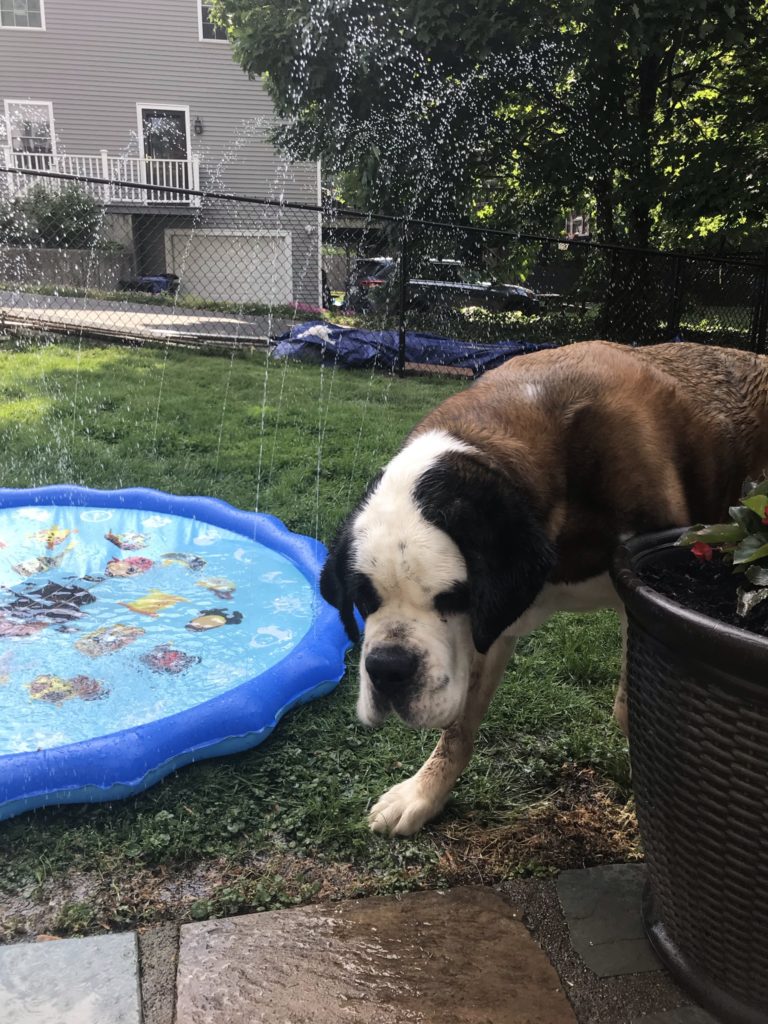It turns out, nothing kills more pets during the summer months than heatstroke.
As animal safety experts warn, our furry friends cannot regulate their internal temperatures as easily as we can. Humans sweat – which cools us off much faster than any method a dog uses.
But dogs have fewer mechanisms for cooling off, relying on panting, breathing, and a process called vasodilation — a widening of the blood vessels — to rid their bodies of heat. Their paws, as well, contain sweat glands that are activated when they get hot.
What are the biggest causes of heatstroke in dogs?
What happened to Buddy is the most common way dogs die from heatstroke. Since 2016, it has been illegal to leave a dog in a vehicle in Massachusetts. A car, even with windows cracked, will heat up to over 120 degrees within 10 minutes. Dogs rapidly overheat in the oven-like temperatures, succumbing to symptoms that include lethargy, panting, lack of coordination, a deep red or purple tongue, and vomiting. They can quickly go into shock and suffer organ failure, brain damage, or death.
Dogs are also at risk for heat exposure both at home and on vacation. Danger points include:
- Sunny yards without shade or breezes
- Hot concrete and asphalt paths
- New climates or any hot environments, such as beaches, parks, and boats.
Our dogs and the sun
Which dogs are most sensitive to high temperatures?
- Short-muzzled dogs like Pugs and Bulldogs, and northern breeds like Malamutes
- Older dogs, puppies under six months, and overweight dogs
- Dogs with medical conditions or those on medication
- Those who have suffered from heat stress or heatstroke in the past. (My Buddy!)
Should we shave our dogs to keep them cool?
Fur acts as an insulator for animals – keeping them cool in summer and warm in winter. Double-coated breeds, for instance, should not be shaved, according to American Kennel Club guidelines. But coats and needs vary by breed, so it’s best to talk to your vet before deciding whether or not to shear your friend.
Protecting your dog every day
Many of the ways we can keep our best buddies safe are similar to how we’d care for a child.
- Bring the dog inside to enjoy the air conditioning on warm days or provide a spot outside with plenty of cover and ventilation.
- Change routines to accommodate the weather – walk, exercise, or train the animal in the mornings or early evenings when temperatures have dropped. Avoid asphalt and head to softer ground, such as dirt trails or grass.
- Provide water play by cooling your dog with a hose or a wading pool.
- Consider purchasing a cool mat or other dog-friendly cooling aids if you’re traveling.
- Use animal-safe sunscreen on dogs with pink noses or exposed skin.
If the worst happens, here’s how to rescue your dog from heatstroke:
- Remove your dog from the heated environment immediately.
- Wet your pooch with a hose or any available water. Do not use ice or very cold water. If water is not available, cover your pooch in wet towels or place in front of a fan.
- Get to the vet as soon as possible, cooling the dog along the way.
- If you can’t get to a vet right away, monitor your pet’s temperature and check for signs of shock. Stop cooling when your dog’s temperature reaches 104° F. (This can be done rectally with a digital thermometer coated in petroleum gel or baby oil.) Cooling the dog beyond this temperature could increase chances of shock.
- Visit a vet even if your little guy seems ok. Medical problems from heatstroke can take days to show.
My story turned out well – Buddy recovered from his heatstroke with no noticeable aftereffects. And although he is now almost 13 years old, my family relentlessly rehashes The Big Mistake every time I claim a high road during an argument, effectively quashing my credibility. Hopefully, this blog and a little common sense will help you avoid the same fate!
The Hundred Club — Serving the Community
At The Hundred Club of Mass., we care for those who care for us. When these everyday people-turned-heroes lose their lives in the line of duty, we are here for their families. We have helped beneficiary families since 1959. Our assistance encompasses college scholarships, financial and legal support, counseling, and enrichment programs. Help us help those who dedicate their lives to serving and protecting our communities.
When a police officer or firefighter dies, in many cases, their paycheck and insurance stop before their death benefits begin, which is where the Hundred Club steps in to help. Your generosity provides immediate support to the families of these everyday heroes; funds they can rely upon to pay rent, groceries, and other bills. Help us continue the tradition of caring for those who care for us. Donate to the Survivor’s Fund: https://100clubmass.org/donate/

